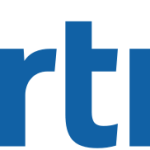- Industry: Consulting
- Number of terms: 1807
- Number of blossaries: 2
- Company Profile:
Gartner delivers technology research to global technology business leaders to make informed decisions on key initiatives.
An output device that prints one page at a time. This includes the following types of device:
• Laser — An electrophotographic technology in which laser beams are used to transfer images to a photoreceptor belt or a drum. It has the ability to buffer, in part or in whole, a page of images received from an electronic source and then transfer these images to a receiving substrate.
• Light-emitting diode (LED) — An electrophotographic technology in which precisely aligned arrays of LEDs are used to expose the print drum. Océ employs a unique and proprietary variation on electrophotography that it calls CopyPress. The technology is similar and uses a solid toner. The image is built up color by color and then deposited on an intermediate drum, just as is done in some color laser printers. The difference is that CopyPress can print seven toners for a wide color gamut. The toner is then pressed into the paper and fused at a lower temperature than on laser printers.
• Liquid electrophotography (LEP) — A technology in which the toner is a liquid and is absorbed into the paper fibers instead of adhering to the surface the way laser print does. As a result, the printed pages look and feel offset-printed. As on printing presses, the different colored inks are deposited on a rubber roller called a blanket and are then transferred to the paper. This means the inks mix as they soak into the surface of the paper rather than being layered on top of one another, as is the case with laser printers. With up to six inks, LEP printers can also produce a wider range of colors than the four colors usually found in dry-toner laser printers.
• Solid ink — An inkjet technology in which solid inks are liquefied by heating and then sprayed onto a drum, where they are then transferred to paper. Solid inkjet can print on a wide range of paper types because the solid ink does not wick into paper to degrade the image. Solid ink printers and MFPs are included in the page printer market because they compete directly with the laser output devices.
• Electron beam, imaging ion deposition and magnetography — Examples of other technologies that can be used in page output devices.
Industry:Technology
Data communications network in which data is divided into small segments known as packets. These are divided so that each packet forms part of a complete message that can be routed through a network of switches to its destination independently of all other packets forming the same message.
Industry:Technology
Part of a GPRS BSS product, the PCU provides an interface between the SGSN and the radio network using frame relay technology.
Industry:Technology
An interface device that buffers data sent to and from character mode devices, and assembles and disassembles the packets needed for X.25 operation.
Industry:Technology
Gartner’s Pace-Layered Application Strategy is a methodology for categorizing, selecting, managing and governing applications to support business change, differentiation and innovation.
Industry:Technology
A company that designs, develops and manufactures mobile devices under contract. These devices are sold to end users under the brand of the mobile-device vendor, wireless service provider or contract partner. Examples of ODMs include Taiwan-based BenQ, GVC and HTC.
Industry:Technology
An overlay is an installation of a networking component that is noninvasive to the wired infrastructure. Overlays generally employ tunneling techniques that connect end-point functionality to a central controller offering a variety of data, management and control plane functions.
Industry:Technology
Over the air (OTA) refers to the ability to download applications, services and configurations over a mobile or cellular network.
Industry:Technology
An outage management system (OMS) is a utility network management software application that models network topology for safe, efficient field operations related to outage restoration. OMSs tightly integrate with call centers to provide timely, accurate, customer-specific outage information, as well as supervisory control and data acquisition (SCADA) systems for real-time-confirmed switching and breaker operations. These systems track, group and display outages to safely and efficiently manage service restoration activities.
Industry:Technology
OSI management refers to the facilities to control, coordinate and monitor the resources that enable communications in an Open Systems Interconnection (OSI) environment.
Industry:Technology
